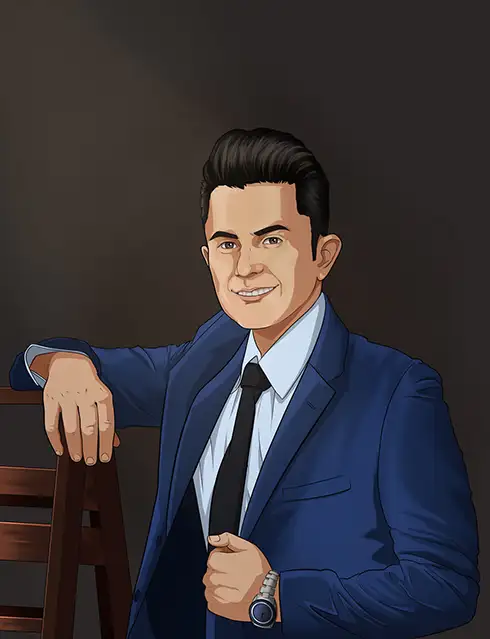Rear-end collisions are among the most common car accidents on California roads, often resulting in confusion and concern over who is responsible. If you’ve recently been involved in one, you might wonder, who is at fault in a rear-end collision in California? Understanding how fault is determined is crucial for protecting your rights and ensuring you receive fair compensation for any damages or injuries you have sustained.
Understanding Rear-End Accident Fault
California law generally presumes the driver who rear-ends another vehicle to be at fault. This presumption stems from the requirement that drivers must maintain a safe following distance. According to California law, drivers must not follow another vehicle more closely than is “reasonable and prudent,” considering the speed of the vehicle, traffic, and road conditions. This law aims to prevent situations where a driver cannot stop in time to avoid a collision, which is often the case in rear-end accidents.
However, this presumption is not absolute. There are scenarios where the lead driver or another party might share or even bear the full responsibility for the collision. Determining rear-end accident fault involves examining all aspects of the accident, including the behavior of both drivers, the road conditions, and any other contributing factors.
Factors and Scenarios Impacting Who Is at Fault in a Rear-End Collision in California
While the rear driver is usually presumed at fault, several situations can complicate the determination of liability. Understanding these scenarios can help clarify who is at fault in a rear-end collision in California and guide your next steps.
Sudden Stops
If the lead vehicle makes an abrupt and unexpected stop without a valid reason, that driver may be partially or fully at fault for the collision. For example, if a driver slams on the brakes to avoid missing a turn or exit, the rear driver may not have sufficient time to react, potentially shifting some liability to the lead driver. Traffic laws require drivers to signal their intentions and avoid sudden maneuvers that could cause an accident.
Mechanical Failures
A vehicle with faulty brake lights, worn-out tires, or other mechanical issues may not signal the rear driver in time, leading to a collision. In such cases, the owner of the malfunctioning vehicle could be held responsible for the accident. Regular vehicle maintenance is crucial to ensuring all safety features are operational and reducing the risk of accidents.
Multiple-Vehicle Collisions
In chain-reaction accidents, where several cars are involved, determining fault can be complex. If a car is pushed into the vehicle in front of it due to being rear-ended, the original driver who caused the first impact may be primarily at fault for the entire incident. Witness statements, dashcam footage, and police reports often play a significant role in unraveling these complex situations.
Reverse Accidents
If the lead driver suddenly reverses into the car behind them, the presumption of fault shifts. In this scenario, the lead driver may be liable for the rear-end collision. Such accidents are less common but do occur, often in parking lots or during parallel parking maneuvers.
Comparative Negligence in California
California follows a “pure comparative negligence” system, meaning that fault can be shared among multiple parties involved in an accident. Even if you share fault for the accident, you can still recover compensation, though your percentage of fault will reduce your recovery. For instance, if you are 30% at fault for a rear-end collision, your compensation would be reduced by 30%.
This system underscores the importance of thorough investigations and accurate fault determinations in rear-end collision cases. Working with an experienced attorney can help ensure an appropriate assessment of fault and protection of your rights. An attorney can gather evidence, consult with experts, and negotiate with insurance companies on your behalf, ensuring you receive the compensation you deserve.
Legal Assistance for Rear-End Collisions
Understanding who is at fault in a rear-end collision in California is vital. Determining fault can sometimes be straightforward, but in many cases, it involves a detailed analysis of the accident’s circumstances. The Law Offices of Ali Yousefi, P.C. is here to help you navigate these complexities and ensure you receive the compensation you deserve.
Our experienced legal team will thoroughly investigate your case, gather evidence, and work to establish liability. We understand the emotional and financial toll that a car accident can take, and we’re committed to providing compassionate and effective legal representation. Whether you’re dealing with medical bills, lost wages, or emotional distress, we’re here to support you every step of the way.
Protect Your Rights
Determining who is at fault in a rear-end collision in California is crucial for any accident claim. While the rear driver is typically presumed to be at fault, various factors can influence this determination. Understanding these factors and their application to your case can help protect your rights and ensure a fair outcome.
Don’t navigate the legal complexities alone if you have been involved in a rear-end collision. The Law Offices of Ali Yousefi, P.C. is here to help you every step of the way, ensuring that you receive the support and compensation you deserve.
Contact us today to schedule a consultation.



